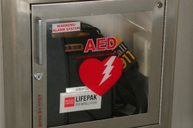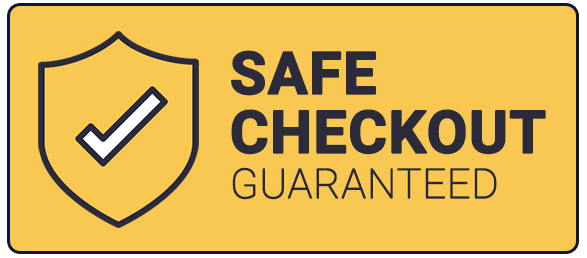|
Have you ever had to call 911 and required 911 assistance in performing CPR or in assisting a choking victim? Hopefully not-but if you have we all know how helpful that voice assistance and the 911 dispatcher can be.
Recently, the American Heart Association (AHA) (2016) presented recommendations that will establish standards to ensure timely and high quality delivery of dispatcher-assisted CPR, also known as telephone CPR (T-CPR). If you have any suggestion; the AHA will be accepting comments from individuals through the website cpr.heart.org/PublicComment until November 16, 2016. 911 dispatcher assistance is critical. Every year more than 350,000 people suffer out-of-hospital cardiac arrest (OHCA) in the United States with just a 12 percent survival rate in 2016. Early access to 911 and early CPR are the first two links in the chain of survival from cardiac arrest. Currently, less than half of those who suffer an OHCA receive bystander CPR. The recommendations by by AHA (2016) include the following:
http://www.firehouse.com/press_release/12257911/american-heart-association-recommends-standards-to-improve-dispatcher-assisted-cpr
Comments
What is an AED? What does the AED stand for? Where do I do find an AED when I need one? As an American Heart Association Instructor these are questions that I get all of the time.
The acronym AED stands for "automated external defibrillator". Fortunately, the AED is becoming more widely available in area businesses. The AED, roughly the size of a small laptop, transmits a portable electric device that gives a victim a better chance of recovering from cardiac arrest by telling the person using it how to use it to deliver a shock to the heart. However, the AED does required periodic checks to ensure that it it working properly. Most are checked yearly by a certified inspector to make sure they’re in good working condition. There are a lot of different makes and models of AED’s. Some batteries last 5 years or more, others only 2 years. Some AED’s emit an audible sound when they need repair, and some AED’s can do a self-check of their system on their own. However, if you have an AED, you should go around at least monthly and check your different AED’s on a weekly or monthly basis to make sure they’re in working condition,” Lastly, remember that when an AED is used, the American Heart Association (2016) has indicated that the survival rate jumps to 74 percent. So if are a business owner and don't have an AED-you can contact me on how to get one. Or if you are a Dad or Mom or caregiver or simply want to know how to use an AED-you can contact me regarding our next AED certification class. As many of you know; I absolutely treasure my pug Ya-Ya. I am also a die-hard animal lover and when I read this article I had to share this with my blog followers. I have always been in question as to whether the same techniques we use in AHA choking victims and patients can also be used on animals. James Barr, a clinical assistant professor at Texas &M College of Veterinary Medicine & Biomedical Sciences advised that "pet owners should perform the Heimlich maneuver on their pet if they believe the pet is choking on something,” Barr went onto further indicate that “Usually this means that the owner has seen the pet swallow something and that the pet has been having trouble breathing since. This can be an object that was swallowed unintended, but it can also be something like a toy or a rawhide.”
Barr furthers suggested that "if a dog or cat is suffocating, it may start to panic. In this case, pet owners should approach their pet and carefully restrain it. Do not muzzle the dogs. First, check to see if the object can be removed with your fingers. Open the animal’s mouth using two hands and use your fingers to remove the object. It may also be helpful to use the flat side of a spoon to push the object closer if it is out of reach". In addition, Barr indicated that "If the object cannot be removed with fingers, objects may be removed from small dogs’ and cats’ throats by the owner gently picking up the dog by their thighs and swinging them from side to side. Apply forward pressure to the abdomen just behind the rib-cage, if the condition does not improve. Larger dogs require the Heimlich maneuver if the object cannot be removed with fingers." Here is what to do to perform the actual Heimlich Maneuver: If your large dog is standing, place your arms around its belly and make a fist with your hands. Push up and forward just behind the rib cage. If the dog is lying down, place one hand on its back and use the other hand to squeeze the abdomen upward. Be sure to check and remove any loose objects in or around the dog’s mouth that have become dislodged. Here is the article link if you want to read more and/or make a copy. http://www.courierjournal.net/online_only/article_00f892b6-6ad9-11e6-8b19-23add9566d69.html |
AuthorDr. Tracy A. Jones is the CEO of Help-A-Heart CPR, LLC and an American Heart Association, ASHI, and American Red Cross Master Program Trainer, Instructor, & AHA Faculty Member located in San Antonio, Texas. Archives
June 2024
Categories |
Help-A-Heart CPR, LLC | 1747 Citadell Plaza Suite 101 | San Antonio, Texas 78209 | (210) 380-5344 | [email protected]
Copyright © Help-A-Heart CPR, LLC 2024
100% Certification Acceptance
We promise your employer, school, or agency will accept the certification card we issue to you. If there is a question of acceptance or validity, simply send us an email at [email protected] with full details. We will reach out to the individual/entity and provide accreditation information. If still there’s a question, we will provide you with a full refund of your class fee. It’s that simple.
We promise your employer, school, or agency will accept the certification card we issue to you. If there is a question of acceptance or validity, simply send us an email at [email protected] with full details. We will reach out to the individual/entity and provide accreditation information. If still there’s a question, we will provide you with a full refund of your class fee. It’s that simple.
|
Communities Served
ALABAMA: Birmingham
ARKANSAS: Fayetteville, Hot Springs, Jonesboro, Little Rock NEW MEXICO: Albuquerque TENNESSEE: Knoxville TEXAS: Amarillo, Arlington, Austin, Bandera, Bastrop, Boerne, Brownsville, Comfort, Converse, Corpus Christi, Dallas/Ft. Worth, Del Rio, Dripping Springs, El Paso, Floresville, Fredericksburg, Georgetown, Harlingen, Houston, Junction, Katy, Kerrville, Kingsville, Kingwood, Laredo, Lubbock, Lufkin, McAllen, Midland, New Braunfels, Odessa, Pleasanton, Round Rock, San Angelo, San Marcos, Schertz, Seguin, Taylor, Temple, Texarkana, Tyler, Universal City, Victoria, Waco, The Woodlands |
Why Choose Help-A-Heart CPR?
1. Flexible Scheduling
2. On and Off Location Training Available 3. Casual, Fun Atmosphere 4. Best Price Guarantee 5. All Instructors are AHA and/or ARC certified 6. 5 Star Google Reviews 7. Blended Learning (Online & Skills Check) Available 8. Meets OSHA & College CPR Requirements 9. Get Certified Within 3-4 Hours 10.Certification Is Good For Two Years 11. Official AHA/ARC/ASHI Training Site 12. High Quality Safety Training! |









